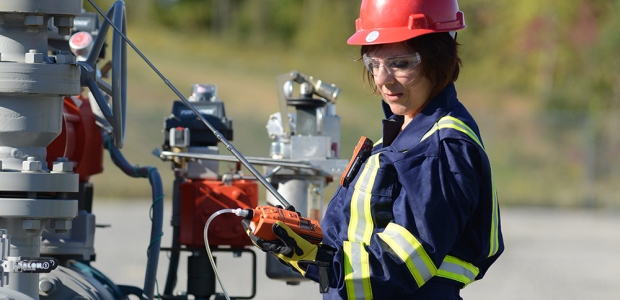
Combating the 'Rodney Dangerfield Effect' in Gas Detection
Unfortunately for the individual user and the companies that mandate these monitors, there needs to be a correction. If not, there can be some dire consequences.
- By Kyle Krueger
- May 24, 2018
During the past few years, the oil and gas industry has seen a large spike in four-gas monitor usage. The reason behind the increase is that many companies are starting to realize that there are more common gas hazards outside of just hydrogen sulfide (H2S).
For many users, this is their first time wearing a four-gas monitor. As four-gas monitor usage has increased, I have been witnessing an interesting phenomenon that I am calling the Dangerfield Effect. In short, the monitors are getting, as the great actor and comedian Rodney Dangerfield would say, "No Respect." That's right, the four-gas monitor is quickly turning into the Rodney Dangerfield of the oilfield—it gets "No respect I tell ya!" Unfortunately for the individual user and the companies that mandate these monitors, there needs to be a correction. If not, there can be some dire consequences. But why did this effect take hold, and what can we do to fix it?
To explain the Dangerfield Effect, one needs only to look at how we maintain our relationships with our electronic devices. The health of that relationship comes down to a simple input/output equation. Let’s use our cell phones as an example. After all, a phone and a gas detector are two extremely common devices that an oilfield worker would wear and interact with on a daily basis. That being said, I have a confession to make: I LOVE MY PHONE. It provides me with important updates about work, I can access information anywhere, and I can FaceTime with my family when I travel. Those are great outputs. And the only inputs that it requires are that I charge it, pay for a data plan, and don’t abuse it. If I didn’t value these outputs, then I can guarantee you that I would have the cheapest phone with no features, and it would hardly be used. However, I continue to invest in a high-quality device that requires more inputs because these outputs are so valuable and important. My phone and I have a very healthy relationship, in part because the outputs far outweigh the inputs.
Now, let's look at the relationships that users (many are first-time users) have with their four-gas monitor. Here we have a situation where the device is asking for the following regular inputs: bump testing, charging, and calibrating. However, users often associate the main outputs negatively. The outputs (alarms) are sometimes considered false, annoying, or disruptive. These outputs can equate to stopping work, which can be associated with an immediate loss to productivity (money).
Keep in mind, these outputs are arguably some of the most important outputs in your life. Additionally, users are now finding that there are far more alarms than they were used to with their previous single-gas H2S monitor. This is leading to the manifestation of the “Dangerfield Effect,” where the inputs far outweigh the outputs, leading to a loss of respect for these life-saving gas monitors.
When the outputs aren’t valued, then the inputs start to wane, lose their importance, or stop completely. Users question, why do I even wear this thing? The only output they really want is for the device to provide little or no outputs! What this means is that the hard-inconvenient truths (the aforementioned inputs) behind the technology, and the reasons for wearing it, become unimportant or forgotten. For example, all manufacturers recommend a bump test for an IMPORTANT reason (check the fine print in each manual). We can't ignore or market this reality away.
Steps to Fix This
Often, companies and users gain respect once there has been an unfortunate accident surrounding gas detection that they have witnessed firsthand. But it doesn't and shouldn't have to be that way.
Step 1: Invest in external or internal training on the proper use and limitations of gas detectors and what to do in case of an alarm. Use this time to share stories from first-person accounts, company incidents, or industry accidents. If your workforce can’t make a personal connection with the content, then you are starting off this journey on the wrong path.
Step 2: Pay attention to your gas detection program. Are people properly maintaining the equipment? How are they using the monitors? What are they being exposed to? These clues exist in the data logs (all you must do is look). If you aren't paying attention, then why mandate that employees wear them?
Step 3: Feedback, act, and reward. Based on the data, talk with your employees about the monitors. What do they feel about them? Can the tasks be changed so that exposures don’t happen? Or can these be mitigated? What are their thoughts? Can you reward employees for taking the right actions and properly maintaining them?
By no means is this intended to be comprehensive list. The intention is to start a conversation with your workforce about why gas detectors are being worn and what they can and cannot expect from them. Your company invested in gas detectors to enhance worker safety, not to have them become electronic "Boy Who Cried Wolf" devices. This relationship can be saved. There is a cure for the Dangerfield Effect: a healthy dose of education, mindfulness, and truth. By bringing respect to the outputs, the inputs make sense.
Listen, gas detectors won't ever be "cool." They will always be the equivalent to an electronic work chaperone. But please understand the ubiquitous truths surrounding the inputs and ALWAYS act on the output. A gas detector could save your life one day.
This article originally appeared in the June 2018 issue of Occupational Health & Safety.